
TOUREN „MONFERRATO BY BIKE“ „AI FUIN“ IN QUARTO D’ASTI
You can make these routes by bike, motorbike and car.

ROUTE 1: LEVEL OF DIFFICULTY: LOW (low altitude gap)
“RIDING QUIETLY. TO THE SMALL CHURCH OF MADONNA DI VIATOSTO”
Duration ca. 2h km: 30
Starting from Quarto d’Asti, you pass Pontesuero, Valgera and Ardizzone to reach the old Church of Our Lady of Viatosto, just a few kilometers from the city of Asti.
It is a favourite Sunday walk for the folk of Asti. The road winds from the city along through the wooded foothills of the Monferrato, past sleepy villages. Atop a little hill two and a half kilometers from Asti, the church of Viatosto dominates the surrounding countryside. Its parvis offers a beautiful panorama over the town. Founded at the end of the twelfth century, its terracotta structure combines Romanesque and Gothic elements. The church takes its name from an event in 1340.
The plague struck the village, but departed quickly, “via tosto’’, when the villagers made a vow to the Virgin Mary. Some years later, the church was enlarged and decorated.
It now contains many valuable sculptural and pictorial works of art, including a precious cycle of frescoes dating back to the fourteenth and fifteenth centuries, a large wooden crucifix and the splendid wooden statue of the Madonna di Viatosto, sculptured at the beginning of the fourteenth century, judged one of the finest of the local masterpieces. Returning through the city of Asti, you may pass the villages of Azzano d’Asti, Rocca d’Arazzo and Castello d’Annone before reaching Quarto.
And for a tasty break…

Mentioned in official documents from the Tenth century, the village of Portacomaro is described as surrounded by vineyards since 1054, proving the very ancient tradition of wine production in this area. Unlike many villages around, Portacomaro never had a real castle, because it was placed precisely on the borderline between Federico Barbarossa’s properties and the independent Municipality of Asti’s lands, and both decided not to fortify it.
Portacomaro developed a ricetto only, that you can still recognize, which was a group of poor houses protected by a strong wall, where peasants could find protection when they were in danger. In historical town you can visit the beauty parish of Saint Bartolomeo, founded in the Fifteenth century and rebuilt in part in the Eighteenth century and, few km far from the village, the small Romanesque church of Saint Pietro: erected in the first half part of the Twelfth century it preserves in the choir some precious frescos dated to the Fifteenth century. We also suggest you to stop at the famous farm “Durando”, where you will able to taste and buy the typical red wines of this territory, as Barbera d’Asti docg, Ruchè doc and first of all Grignolino doc, which will conquest you thanks to its delicate flavor and characteristic ruby red color. You can’t miss later the typical products prepared using the precious Piedmont IGP Hazelnut, as the famous biscuits called “brut e bun” and the valued hazelnut cream, the perfect ingredient for preparing ice creams, creams and condiments for starters and main courses. You go on to the last stop-over, the village of Scurzolengo, where it will be possible to taste and buy the wines produced by Cascina Tavijn. Placed in the quiet locality of Monterovere, this small winery was born in 1908 and nowadays is managed by the fourth generation of Verrua family, represented by the young Nadia, who introduced successfully the biological growing method. From the six hectares of vineyards this family produces combining tradition and innovation some of the best typical wines in Low Monferrato: in particular you can’t miss Grignolino, which has its birthplace in this area, and Ruchè, which nowadays is appreciated internationally too. You can take the way back and touching the locality of Migliandolo you come back to Quarto.

ROUTE 2 – LEVEL OF DIFFICULTY: STANDARD (moderate altitude gap)
“BEAUTIFUL LANDSCAPES AND NATURE...DISCOVERING VINCHIO HILLS”
Duration ca. 1,5h km: 35
A suggestive trip among the hills in the Southern part of Province of Asti, rich in Barbera vineyards, hazelnut trees and small pristine woods, will lead you to the village of Rocchetta Tanaro, touching the localities of Castello d’Annone and Cerro Tanaro. In Rocchetta Tanaro you can stop at the Wine Cooperative, which is called “Post dal vin”, an ironic dialectal expression. Among these hills especially used for Barbera grapes growing, two hundreds vine growers bring here their grapes since 1960, with the assistance of experts in order to respect environment and the consumer’s health.
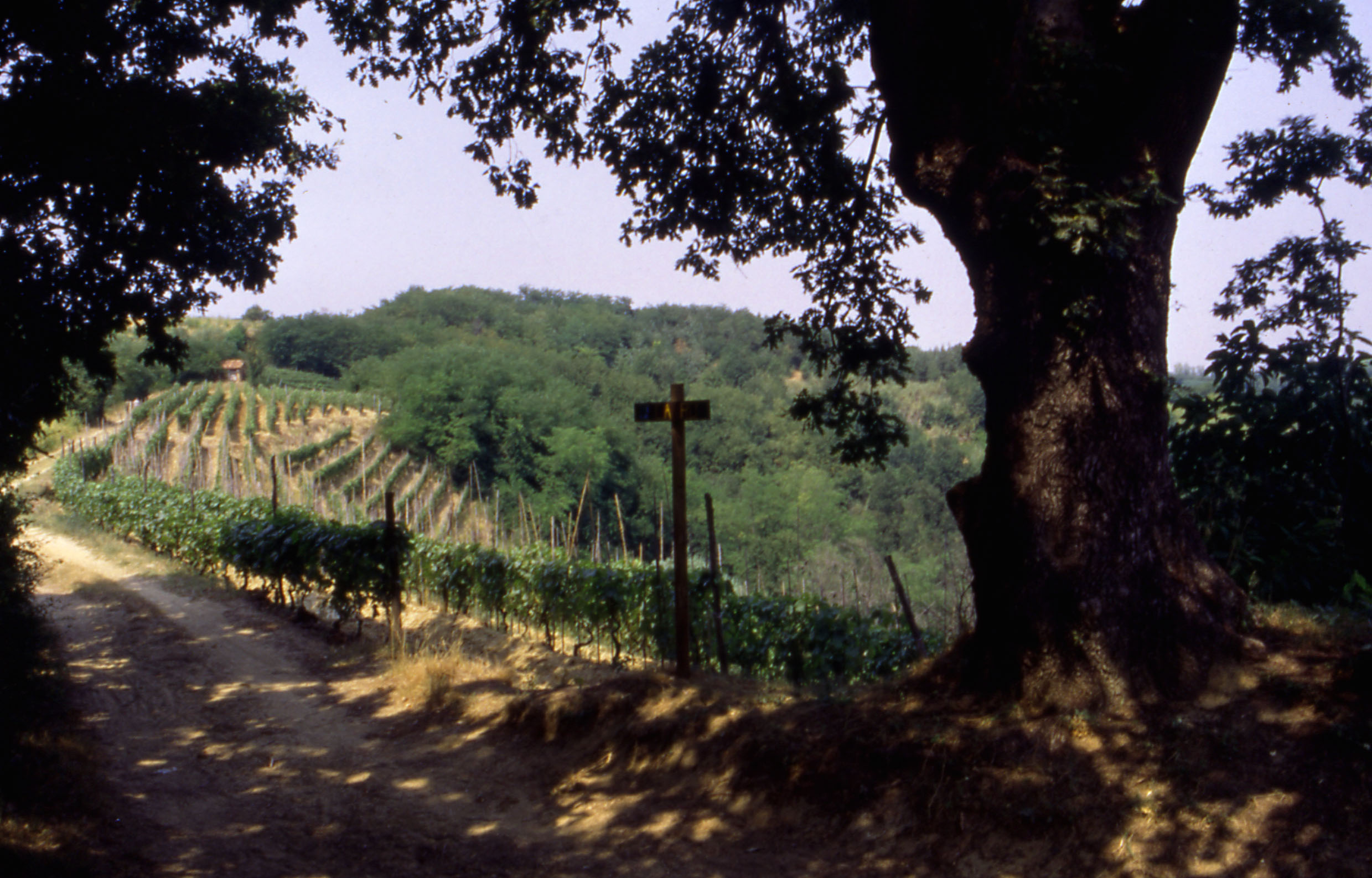 . Thanks to respect of tradition combined with use of innovative technology, this winery produces a wide range of both white and red wines, where Barbera and "Spiritoso", the first kind of flavored Barbera wine stand out. The last one is perfect as a delightful digestive and in combination with desserts and cheese.
Pedaling for one km from the Winery, you will able to reach the small Romanesque church of Santa Maria de Flesco; it rises up isolated in countryside and shows beauty decorations on the walls, where lines of red bricks alternate with stones. In the apse small blind arches resting upon molded shelves are also interesting, while façade and lateral walls show decorations dated to the end of The Nineteenth century.
From Rocchetta, going on in the direction of Regione Sant’Emiliano, you’ll reach the Natural Park of Rocchetta Tanaro and later the town of Mombercelli; the next stop, placed few km far, will be the small town of Vinchio, in the heart of High Monferrato Hills. It’s the birth place of Davide Lajolo, partisan and writer who was born here in 1912, and houses a small photographic museum dedicated to him; it also offers nice paths in the Special Natural Reserve of Valsarmassa, that you made by walk or bike.
You can’t miss in the Reserve the famous "Ru", the great centenary oak elected as the monument of Reserve, and the shed of Ulisse, from the nom de guerre of partisan Lajolo. Here, in the secret of night silence, the young Ulysses met partisans coming from villages around and organized the battle actions during the Second World War. Many tales by Lajolo are dedicated to these hills and his countrymen, included in the work called “I mè”, where he describes rural world’s customs, superstitions, bad habits and virtues in Monferrato during the past.
. Thanks to respect of tradition combined with use of innovative technology, this winery produces a wide range of both white and red wines, where Barbera and "Spiritoso", the first kind of flavored Barbera wine stand out. The last one is perfect as a delightful digestive and in combination with desserts and cheese.
Pedaling for one km from the Winery, you will able to reach the small Romanesque church of Santa Maria de Flesco; it rises up isolated in countryside and shows beauty decorations on the walls, where lines of red bricks alternate with stones. In the apse small blind arches resting upon molded shelves are also interesting, while façade and lateral walls show decorations dated to the end of The Nineteenth century.
From Rocchetta, going on in the direction of Regione Sant’Emiliano, you’ll reach the Natural Park of Rocchetta Tanaro and later the town of Mombercelli; the next stop, placed few km far, will be the small town of Vinchio, in the heart of High Monferrato Hills. It’s the birth place of Davide Lajolo, partisan and writer who was born here in 1912, and houses a small photographic museum dedicated to him; it also offers nice paths in the Special Natural Reserve of Valsarmassa, that you made by walk or bike.
You can’t miss in the Reserve the famous "Ru", the great centenary oak elected as the monument of Reserve, and the shed of Ulisse, from the nom de guerre of partisan Lajolo. Here, in the secret of night silence, the young Ulysses met partisans coming from villages around and organized the battle actions during the Second World War. Many tales by Lajolo are dedicated to these hills and his countrymen, included in the work called “I mè”, where he describes rural world’s customs, superstitions, bad habits and virtues in Monferrato during the past.
 Two kilometers from the village, on the road to Vaglio Serra, lies the famous winemaking co-operative Viticoltori Associati Vinchio e Vaglio Serra, the leading company in the field at an international level. There you can sample and purchase the best wines of the area, outstanding among them Barbera d’Asti docg. Instead of going to Vinchio, you can take the Montegrosso d’Asti road. Crossing the railway near Vianoce, you get to internationally famous Agliano Terme with its valuable thermal springs - and its excellent Barbera d’Asti. Stop off at the family-run Tre Acini winery in Vianoce. For more than a century, it has been producing top-quality biological wines along traditional lines, concentrating on quality rather than quantity to satisfy connoisseurs from all over Italy. On the way home you pass Castiglione d’Asti, dominated by its ancient castle, and Isola d’Asti, famous for its production of vegetables and flowers grown in gardens and greenhouses strung out along the banks of the River Tanaro. Travelling alongside the river , you pass Azzano, Rocca d’Arazzo and Castello d’Annone before reaching Quarto.
Two kilometers from the village, on the road to Vaglio Serra, lies the famous winemaking co-operative Viticoltori Associati Vinchio e Vaglio Serra, the leading company in the field at an international level. There you can sample and purchase the best wines of the area, outstanding among them Barbera d’Asti docg. Instead of going to Vinchio, you can take the Montegrosso d’Asti road. Crossing the railway near Vianoce, you get to internationally famous Agliano Terme with its valuable thermal springs - and its excellent Barbera d’Asti. Stop off at the family-run Tre Acini winery in Vianoce. For more than a century, it has been producing top-quality biological wines along traditional lines, concentrating on quality rather than quantity to satisfy connoisseurs from all over Italy. On the way home you pass Castiglione d’Asti, dominated by its ancient castle, and Isola d’Asti, famous for its production of vegetables and flowers grown in gardens and greenhouses strung out along the banks of the River Tanaro. Travelling alongside the river , you pass Azzano, Rocca d’Arazzo and Castello d’Annone before reaching Quarto.
Or you can go up towards Montegrosso d’Asti, famous for its Barbera d’Asti, past Vigliano d’Asti and Mongiardino. Then it’s Azzano, Rocca d’Arazzo and Castello d’Annone - and home to Quarto.

ROUTE 3 - CONSIDERABLE DIFFICULTY ( long and hilly)
Discovering the villages of the Ruchè.
ROUTE A
Duration ca. 4-5h km 65
A beautiful panoramic journey through the Ruchè hills, with their doc Asti wines which are gaining ever-growing international recognition thanks to their characteristic fruity flavor.
A route enlivened by switchback roads past vineyards, field, small woods and historic villages. From Quarto the first stop is Refrancore, with the imposing tower of San Sebastiano rising up from the homeland of the finocchini biscuits. Second stop is Castagnole Monferrato, the real capital of this winegrowing area, with the ruins of the ancient fortification and the sumptuous St. Martin’s Church. Stop at the Cantina Sociale of Castagnole to sample the best local wines, with the Ruché the leader. From Castagnole, take the Scurzolegno road, then along the ridge-top through the Ruché vineyards to the next crossroads and go on towards Calliano. A few kilometers further, and we find Moncalvo, the former capital of the Marquesses of Monferrato and now the site of an important national truffle fair; you can’t help but be enchanted by the charming little streets of the centre full of craftsmen’s workshops and by the splendid parish church of Saint Francis of Assisi with its paintings by the seventeenth-century artist Guglielmo Caccia, better known as Moncalvo. Do not miss a visit to the famed Bottega del Vino or Sette Colli which showcases the wine from Moncalvo and the surrounding area; outstanding is the Barbera d’Asti docg, whose refined and mellow qualities make it appreciated all over the world. Then back home past Grazzano Badoglio, Casorzo, Grana, Montemagno and Refrancore.
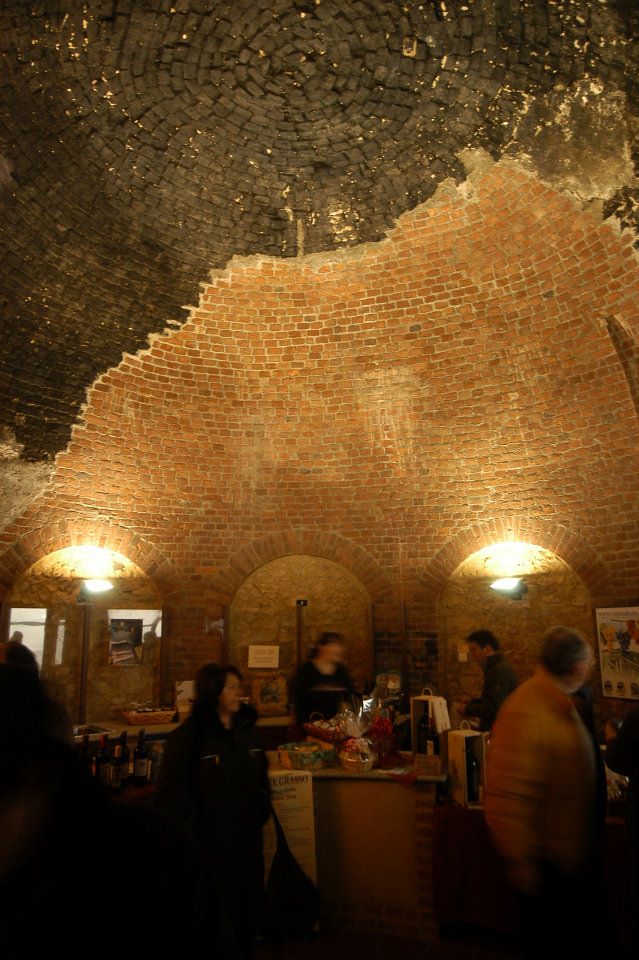
ROUTE B
Duration: 5-6 ore circa km: 70
Leave Quarto for Refrancore, where the majestic tower of San Sebastiano dominates the land of “ finocchini”, the famous traditional local biscuits. Then go to Castagnole Monferrato, the real capital of this wine district, where you can see the glorious church of St. Martin and the ruins of the ancient fortifications – and you can taste the famous Ruchè at the Wine Co-operative of Castagnole Monferrato. Now off to Montemagno to explore the fascinating old town centre with its medieval street plan, all dominated by the imposing Ghibelline castle erected in XIII and XIV centuries.
 Next comes Grana and then the homeland of the sweet Malvasia doc which gives its name to the village of Casorzo. Now past Ottiglio and Cereseto, and across the foothills of the Casale Monferrato hills to the Sacred Mountain of Crea with its famous Shrine of the Virgin Mary, named a UNESCO World Heritage Site in 2003. The Sacred Mountain is 440 metres high and affords a wonderful panorama stretching out from the Po Valley on one side to the Alps in the north and the Ligurian Apennines to the south. The Natural Park has an extent of 50 hectares, mainly wooded. It contains the Holy Way - the Via Sacra - which connects the famous sculptured chapels.
Next comes Grana and then the homeland of the sweet Malvasia doc which gives its name to the village of Casorzo. Now past Ottiglio and Cereseto, and across the foothills of the Casale Monferrato hills to the Sacred Mountain of Crea with its famous Shrine of the Virgin Mary, named a UNESCO World Heritage Site in 2003. The Sacred Mountain is 440 metres high and affords a wonderful panorama stretching out from the Po Valley on one side to the Alps in the north and the Ligurian Apennines to the south. The Natural Park has an extent of 50 hectares, mainly wooded. It contains the Holy Way - the Via Sacra - which connects the famous sculptured chapels.
The Gothic church is dedicated to the Assumption of the Virgin Mary and has three vaulted naves. It dates back to the time of the Crusades, but was enlarged in the fifteenth century and renovated in the seventeenth century. Two splendid chapels lie behind the high altar, the first dedicated to the Virgin Mary. The second is that of Saint Margaret and contains a highly important cycle of fifteenth-century frescoes probably by the famous Piedmontese artist Macrino d’Alba. From the church, the Via Sacra meanders through the park, connecting twenty-three chapels, each representing an episode from the life of the Madonna.This complex is of great historic and artistic value, and was begun in 1590. The statues and frescoes are very realistic and highly dramatic, and are the work of some of the finest artists of the period, including Moncalvo. Do not miss the chapels of the Climb to Calvary, nor the hill-top Paradise Chapel, with a grandiose sculptured group framed by 300 of the Blessed and topped with 175 angels hanging from the ceiling. Home now via Moncalvo and its Bottega del Vino where you can sample Le Monache Barbera del Monferrato docg, an excellent red produced exclusively from grapes from the Monache di Moncalvo vineyard using traditional methods.
Then Calliano and Scurzolegno to Quarto.
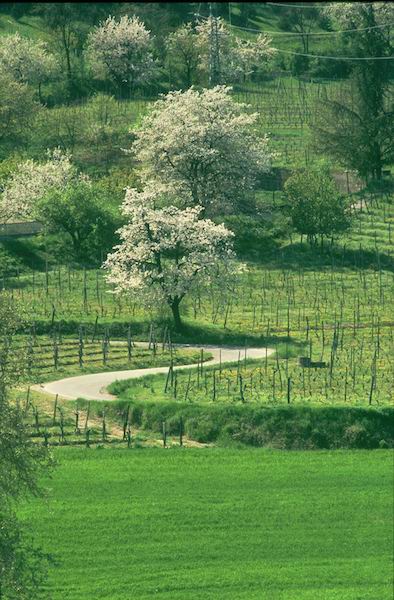
ROUTE 4 – DIFFICULTY LEVEL AVERAGE
“WHEN SPORT AND RELAX HAVE MALVASIA WINE FLAVOR…”
Duration: ca. 4-5h km: 60
Past Refrancore we come to Viarigi, dominated by the mighty Torre dei Segnali, erected in the fifteenth century by the Marquesses of Monferrato, and containing the Gothic church of Sant’Agata with an excellent altarpiece by Gandolfino da Roveto dating back to the beginning of the sixteenth century, and seventeenth-century work by Ursula, the daughter of the famous artist Guglielmo Caccia. 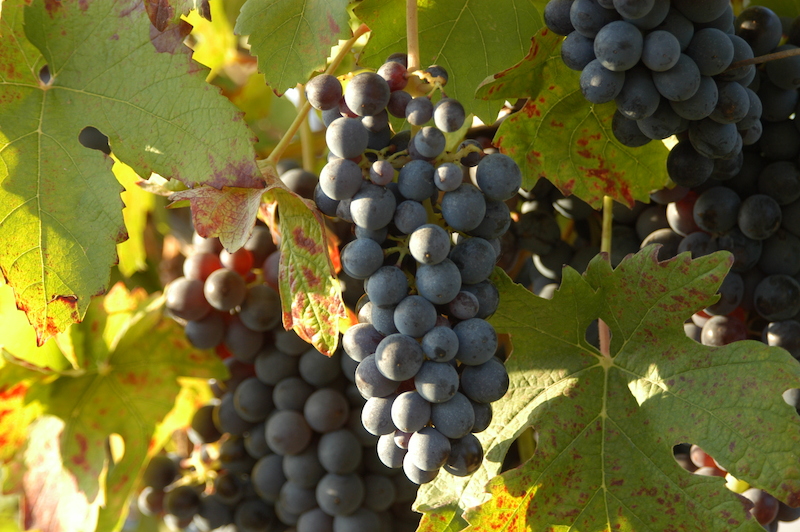 Don’t miss the little church of San Saverio and the Romanesque church of San Marziano, surrounded by wonderful countryside. Next come Vignale Monferrato and Olivola and so into the homeland of the renowned Malvasia of Casorzo doc: a sweet and slightly sparkling red wine perfect to accompany traditional Piedmontese desserts.
Don’t miss the little church of San Saverio and the Romanesque church of San Marziano, surrounded by wonderful countryside. Next come Vignale Monferrato and Olivola and so into the homeland of the renowned Malvasia of Casorzo doc: a sweet and slightly sparkling red wine perfect to accompany traditional Piedmontese desserts.
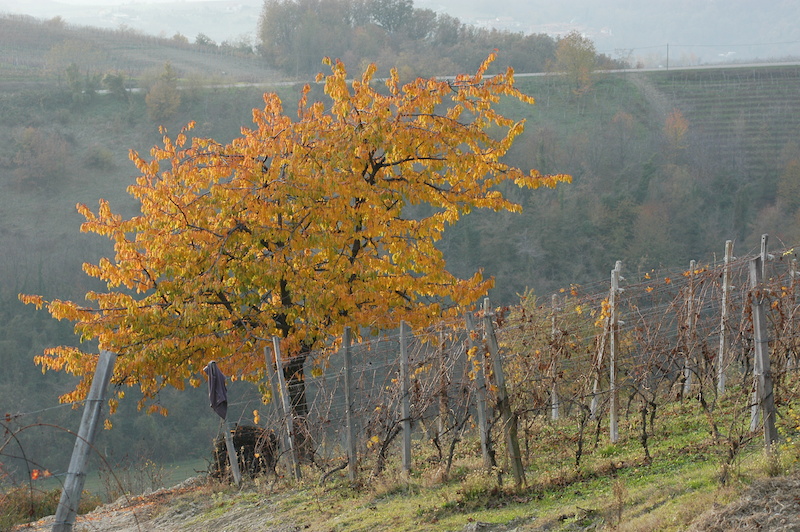
Why not... Discover the geological development of the Asti district at the Paleontological Museum of Asti with a plunge into the Po Sea. Here you see fossil remains dating back to the Pliocene Age of 5 to 2 million years ago. Here you can book an excursion in the Special Nature Reserve of the Valle Andona, the Valle Botto and the Val Grande.< Here you can see Pliocene fossils and the youngest visitors can view an exciting simulation of a dig.